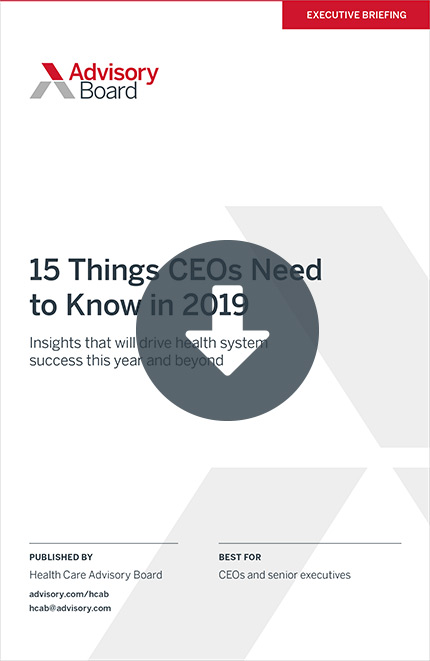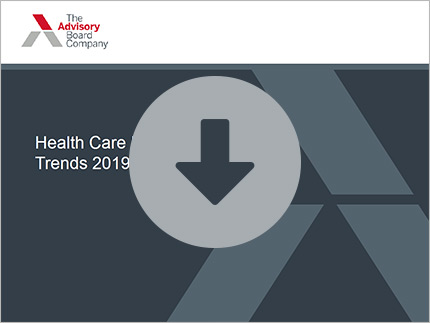Auto logout in seconds.
Continue LogoutSingapore's health care system is considered "an example of excellence," Aaron Carroll, a professor of pediatrics at Indiana University School of Medicine, writes in the New York Times' "The Upshot"—but a recent visit revealed why Americans may not be able to use the health system as "a possible model for" its own innovation
Ready-to-present slides: Health care industry trends for 2019
The best health care system in the world—with a 'big caveat'
Carroll notes that Singapore ranks number one out of 188 nations in the United Nations' health goal rankings. The United States trails behind, at 24th.
While "Americans have spent the last decade arguing loudly about whether and how to provide insurance to a relatively small percentage of people who don't have it. Singapore is way past that," Carroll writes. "It's perfecting how to deliver care to people, focusing on quality, efficiency and cost."
While there are certainly a few things the U.S. health care system could learn from Singapore's health system, "there are also reasons that comparisons between the nations aren't apt," Carroll writes. For instance, Singapore has no remote or rural areas, according to Carroll. "Everyone lives close to doctors and hospitals," he writes.
Singapore also has less poverty compared to other developed nations, a more progressive tax system, and housing that is "heavily subsidize[d]" by the government, Carroll writes.
"There's also a big caveat to Singapore's success," Carroll writes. "It has a significant and officially recognized guest worker program" comprised of about 1.4 million foreigners who work "low-skilled, low-paying jobs"—but those workers are "vulnerable to abuse," according to Carroll.
While the workers are afforded some protections, Carroll explains they are not eligible for the same public health benefits as other Singaporeans and are not included in any of the country's health metrics.
The 'opposite' of the US?
And the way Singaporeans seeks care is in some ways the opposite of the United States', Carroll writes. "We have a largely publicly financed private delivery system. Singapore has a largely privately financed public delivery system," Carroll writes.
He notes about 80% of Singaporeans get primary care from private sector general practitioners. The remaining 20% seek primary care through public "polyclinics" that are designed to treat as many patients as possible as quickly as possible. A visit to the clinic costs less than $6 U.S.
The ratio of public and private care is "flipped" when it comes to hospitalizations. About 20% of patients choose a private hospital for care, while 80% choose a public hospital.
In the United States, the public sector only comes in when it is needed, Carroll states. But in Singapore, the government "decides where and when the private sector can operate," Carroll writes.
The Singaporean government uses this control to regulate new health care technologies, drugs, and devices with "careful scrutiny," according to Jeremy Lim, a partner in Oliver Wyman's Asia health care consulting practice.
The government also uses its power to mandate public health initiatives, Carroll notes. For instance, Singapore "got beverage manufacturers to agree to reduce sugar content in drinks to a maximum of 12% by 2020," Carroll writes.
By contrast, the U.S. public sector has less power over the private sector's actions and advertising. For instance, recently, the American Academy of Pediatrics and the American Heart Association requested that lawmakers limit taxes and advertising in the soda industry "but that's merely guidance," Carroll writes, "there's no power behind it."
Why Singapore's 'good times may not last'
For all its successes, Singapore's health system is not without worries of its own, Carroll writes.
Health officials in Singapore are worried that they will soon face common issues they've observed in other countries, such as the rise of diabetes, unsustainable fee-for-service payments, and the possibility that "hospitals are learning how to game the system to make more money," Carroll writes.
But what will continue to separate Singapore from other countries is that it "seems more geared toward raising up all its citizens than on achieving excellence in a few high-profile areas," Carroll writes. "It turns out that Singapore's system really is quite remarkable. It also turns out that it's most likely not reproducible" (Carroll, "The Upshot," New York Times, 4/22; Scutti, CNN, 9/12/17).
Ready-to-present slides: Health care industry trends for 2019
Download our ready-to-present slides to learn everything you'll need to know about payment reform, the provider market, purchaser behavior, and provider selection trends in 2019.
Don't miss out on the latest Advisory Board insights
Create your free account to access 1 resource, including the latest research and webinars.
Want access without creating an account?
You have 1 free members-only resource remaining this month.
1 free members-only resources remaining
1 free members-only resources remaining
You've reached your limit of free insights
Become a member to access all of Advisory Board's resources, events, and experts
Never miss out on the latest innovative health care content tailored to you.
Benefits include:
You've reached your limit of free insights
Become a member to access all of Advisory Board's resources, events, and experts
Never miss out on the latest innovative health care content tailored to you.
Benefits include:
This content is available through your Curated Research partnership with Advisory Board. Click on ‘view this resource’ to read the full piece
Email ask@advisory.com to learn more
Click on ‘Become a Member’ to learn about the benefits of a Full-Access partnership with Advisory Board
Never miss out on the latest innovative health care content tailored to you.
Benefits Include:
This is for members only. Learn more.
Click on ‘Become a Member’ to learn about the benefits of a Full-Access partnership with Advisory Board
Never miss out on the latest innovative health care content tailored to you.


